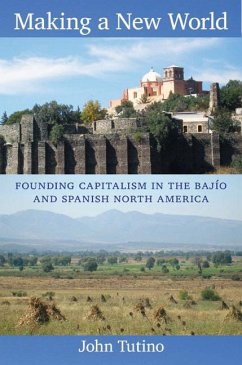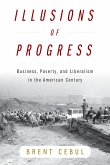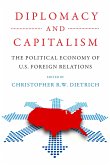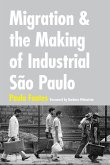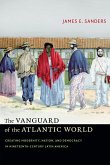- Gebundenes Buch
- Merkliste
- Auf die Merkliste
- Bewerten Bewerten
- Teilen
- Produkt teilen
- Produkterinnerung
- Produkterinnerung
This history of the political economy, social relations, and cultural debates that animated Spanish North America from 1500 until 1800 illuminates its centuries of capitalist dynamism and subsequent collapse into revolution.
Andere Kunden interessierten sich auch für
![Taxes Have Consequences Taxes Have Consequences]() Arthur B LafferTaxes Have Consequences24,99 €
Arthur B LafferTaxes Have Consequences24,99 €![Illusions of Progress Illusions of Progress]() Brent CebulIllusions of Progress43,99 €
Brent CebulIllusions of Progress43,99 €![Diplomacy and Capitalism Diplomacy and Capitalism]() Diplomacy and Capitalism105,99 €
Diplomacy and Capitalism105,99 €![Freedom's Currency Freedom's Currency]() Julia Wallace BernierFreedom's Currency51,99 €
Julia Wallace BernierFreedom's Currency51,99 €![Indians and Leftists in the Making of Ecuador's Modern Indigenous Movements Indians and Leftists in the Making of Ecuador's Modern Indigenous Movements]() Marc BeckerIndians and Leftists in the Making of Ecuador's Modern Indigenous Movements113,99 €
Marc BeckerIndians and Leftists in the Making of Ecuador's Modern Indigenous Movements113,99 €![Migration and the Making of Industrial São Paulo Migration and the Making of Industrial São Paulo]() Paulo FontesMigration and the Making of Industrial São Paulo112,99 €
Paulo FontesMigration and the Making of Industrial São Paulo112,99 €![The Vanguard of the Atlantic World The Vanguard of the Atlantic World]() James E SandersThe Vanguard of the Atlantic World112,99 €
James E SandersThe Vanguard of the Atlantic World112,99 €-
-
-
This history of the political economy, social relations, and cultural debates that animated Spanish North America from 1500 until 1800 illuminates its centuries of capitalist dynamism and subsequent collapse into revolution.
Hinweis: Dieser Artikel kann nur an eine deutsche Lieferadresse ausgeliefert werden.
Hinweis: Dieser Artikel kann nur an eine deutsche Lieferadresse ausgeliefert werden.
Produktdetails
- Produktdetails
- Verlag: Duke University Press
- Seitenzahl: 712
- Erscheinungstermin: 1. September 2011
- Englisch
- Abmessung: 239mm x 165mm x 51mm
- Gewicht: 1139g
- ISBN-13: 9780822349747
- ISBN-10: 0822349744
- Artikelnr.: 33396141
- Herstellerkennzeichnung
- Libri GmbH
- Europaallee 1
- 36244 Bad Hersfeld
- gpsr@libri.de
- Verlag: Duke University Press
- Seitenzahl: 712
- Erscheinungstermin: 1. September 2011
- Englisch
- Abmessung: 239mm x 165mm x 51mm
- Gewicht: 1139g
- ISBN-13: 9780822349747
- ISBN-10: 0822349744
- Artikelnr.: 33396141
- Herstellerkennzeichnung
- Libri GmbH
- Europaallee 1
- 36244 Bad Hersfeld
- gpsr@libri.de
John Tutino teaches the history of Mexico and the Americas in the History Department and the School of Foreign Service at Georgetown University. He is the author of From Insurrection to Revolution in Mexico: Social Bases of Agrarian Violence, 1750–1940, and a co-editor of Cycles of Conflict, Centuries of Change: Crisis, Reform, and Revolution in Mexico, also published by Duke University Press.
List of Maps ix
Prologue: Making Global History in the Spanish Empire 1
A Note on Terminology 27
Introduction: A New World: The Bajío, Spanish North America, and Global
Capitalism 29
Part I. Making A New World
> 1. Founding the Bajío: Otomí Expansion, Chichimeca War, and Commercial
Querétaro, 1500-1660 65
2. Forging Spanish North America: Northward Expansion, Mining
Amalgamations, and Patriarchal Communities, 1590-1700 121
3. New World Revivals: Silver Boom, City Lives, Awakenings, and Northward
Drives, 1680-1760 159
4. Reforms, Riots, and Repressions: The Bajío in the Crisis of the 1760s
228
Part II. Forging Atlantic Capitalism
> 5. Capitalist, Priest, and Patriarch: Don José Sánchez Espinosa and the
Great Family Enterprises of Mexico City, 1780-1810 263
6. Production, Patriarchy, and Polarization in the Cities: Guanajuato, San
Miguel, and Querétaro, 1770-1810 300
7. The Challenge of Capitalism in Rural Communities: Production, Ethnicity,
and Patriarchy from La Griega to Puerto de Nieto, 1780-1810 352
8. Enlightened Reformers and Popular Religion: Polarizations and
Mediations, 1770-1810 403
Conclusion: The Bajío and North America in the Atlantic Crucible 451
Epilogue: Toward Unimagined Revolutions 487
Acknowledgments 493
Appendix A: Employers and Workers at Querétaro, 1588-1699 499
Appendix B: Production, Patriarchy, and Ethnicity in the Bajío Bottomlands,
1670-1685 509
Appendix C: Bajío Population, 1600-1800 529
Appendix D: Eighteenth-Century Economic Indicators: Mining and Taxed
Commerce 549
Appendix E: The Sierra Gorda and New Santander, 1740-1760 559
Appendix F: Population, Ethnicity, Family, and Work in Rural Communities,
1791-1792 573
Appendix G: Tribute and Tributaries in the Querétaro District, 1807 609
Notes 617
Bibliography 665
Index 685
Prologue: Making Global History in the Spanish Empire 1
A Note on Terminology 27
Introduction: A New World: The Bajío, Spanish North America, and Global
Capitalism 29
Part I. Making A New World
> 1. Founding the Bajío: Otomí Expansion, Chichimeca War, and Commercial
Querétaro, 1500-1660 65
2. Forging Spanish North America: Northward Expansion, Mining
Amalgamations, and Patriarchal Communities, 1590-1700 121
3. New World Revivals: Silver Boom, City Lives, Awakenings, and Northward
Drives, 1680-1760 159
4. Reforms, Riots, and Repressions: The Bajío in the Crisis of the 1760s
228
Part II. Forging Atlantic Capitalism
> 5. Capitalist, Priest, and Patriarch: Don José Sánchez Espinosa and the
Great Family Enterprises of Mexico City, 1780-1810 263
6. Production, Patriarchy, and Polarization in the Cities: Guanajuato, San
Miguel, and Querétaro, 1770-1810 300
7. The Challenge of Capitalism in Rural Communities: Production, Ethnicity,
and Patriarchy from La Griega to Puerto de Nieto, 1780-1810 352
8. Enlightened Reformers and Popular Religion: Polarizations and
Mediations, 1770-1810 403
Conclusion: The Bajío and North America in the Atlantic Crucible 451
Epilogue: Toward Unimagined Revolutions 487
Acknowledgments 493
Appendix A: Employers and Workers at Querétaro, 1588-1699 499
Appendix B: Production, Patriarchy, and Ethnicity in the Bajío Bottomlands,
1670-1685 509
Appendix C: Bajío Population, 1600-1800 529
Appendix D: Eighteenth-Century Economic Indicators: Mining and Taxed
Commerce 549
Appendix E: The Sierra Gorda and New Santander, 1740-1760 559
Appendix F: Population, Ethnicity, Family, and Work in Rural Communities,
1791-1792 573
Appendix G: Tribute and Tributaries in the Querétaro District, 1807 609
Notes 617
Bibliography 665
Index 685
List of Maps ix
Prologue: Making Global History in the Spanish Empire 1
A Note on Terminology 27
Introduction: A New World: The Bajío, Spanish North America, and Global
Capitalism 29
Part I. Making A New World
> 1. Founding the Bajío: Otomí Expansion, Chichimeca War, and Commercial
Querétaro, 1500-1660 65
2. Forging Spanish North America: Northward Expansion, Mining
Amalgamations, and Patriarchal Communities, 1590-1700 121
3. New World Revivals: Silver Boom, City Lives, Awakenings, and Northward
Drives, 1680-1760 159
4. Reforms, Riots, and Repressions: The Bajío in the Crisis of the 1760s
228
Part II. Forging Atlantic Capitalism
> 5. Capitalist, Priest, and Patriarch: Don José Sánchez Espinosa and the
Great Family Enterprises of Mexico City, 1780-1810 263
6. Production, Patriarchy, and Polarization in the Cities: Guanajuato, San
Miguel, and Querétaro, 1770-1810 300
7. The Challenge of Capitalism in Rural Communities: Production, Ethnicity,
and Patriarchy from La Griega to Puerto de Nieto, 1780-1810 352
8. Enlightened Reformers and Popular Religion: Polarizations and
Mediations, 1770-1810 403
Conclusion: The Bajío and North America in the Atlantic Crucible 451
Epilogue: Toward Unimagined Revolutions 487
Acknowledgments 493
Appendix A: Employers and Workers at Querétaro, 1588-1699 499
Appendix B: Production, Patriarchy, and Ethnicity in the Bajío Bottomlands,
1670-1685 509
Appendix C: Bajío Population, 1600-1800 529
Appendix D: Eighteenth-Century Economic Indicators: Mining and Taxed
Commerce 549
Appendix E: The Sierra Gorda and New Santander, 1740-1760 559
Appendix F: Population, Ethnicity, Family, and Work in Rural Communities,
1791-1792 573
Appendix G: Tribute and Tributaries in the Querétaro District, 1807 609
Notes 617
Bibliography 665
Index 685
Prologue: Making Global History in the Spanish Empire 1
A Note on Terminology 27
Introduction: A New World: The Bajío, Spanish North America, and Global
Capitalism 29
Part I. Making A New World
> 1. Founding the Bajío: Otomí Expansion, Chichimeca War, and Commercial
Querétaro, 1500-1660 65
2. Forging Spanish North America: Northward Expansion, Mining
Amalgamations, and Patriarchal Communities, 1590-1700 121
3. New World Revivals: Silver Boom, City Lives, Awakenings, and Northward
Drives, 1680-1760 159
4. Reforms, Riots, and Repressions: The Bajío in the Crisis of the 1760s
228
Part II. Forging Atlantic Capitalism
> 5. Capitalist, Priest, and Patriarch: Don José Sánchez Espinosa and the
Great Family Enterprises of Mexico City, 1780-1810 263
6. Production, Patriarchy, and Polarization in the Cities: Guanajuato, San
Miguel, and Querétaro, 1770-1810 300
7. The Challenge of Capitalism in Rural Communities: Production, Ethnicity,
and Patriarchy from La Griega to Puerto de Nieto, 1780-1810 352
8. Enlightened Reformers and Popular Religion: Polarizations and
Mediations, 1770-1810 403
Conclusion: The Bajío and North America in the Atlantic Crucible 451
Epilogue: Toward Unimagined Revolutions 487
Acknowledgments 493
Appendix A: Employers and Workers at Querétaro, 1588-1699 499
Appendix B: Production, Patriarchy, and Ethnicity in the Bajío Bottomlands,
1670-1685 509
Appendix C: Bajío Population, 1600-1800 529
Appendix D: Eighteenth-Century Economic Indicators: Mining and Taxed
Commerce 549
Appendix E: The Sierra Gorda and New Santander, 1740-1760 559
Appendix F: Population, Ethnicity, Family, and Work in Rural Communities,
1791-1792 573
Appendix G: Tribute and Tributaries in the Querétaro District, 1807 609
Notes 617
Bibliography 665
Index 685

